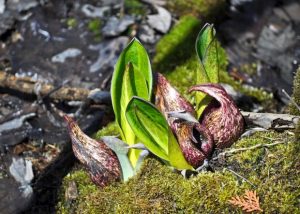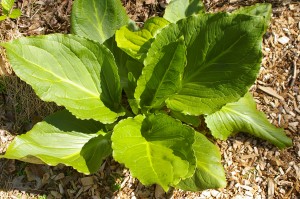designed for the way women work.

Taking a Closer Look At Skunk Cabbage
Category: Presenting "The Curious Gardener"

Some plants and flowers emit a foul-smelling odor that’s difficult to be around. Skunk cabbage (Symplocarpus foetidus) is one such type of perennial wildflower that’s notorious for its pungent odor, particularly if you bruise or break off a leaf. Some people compare it to rotten meat. But like most plants, there are both advantages and disadvantages to growing skunk cabbage.
Appearance and Physical Characteristics
Skunk cabbage begins to blossom in the early spring months. It’s most easily identified by a yellow spadix encapsulated with a brownish-purple pod called a spathe. When skunk cabbage reaches a height of 2-3 feet tall, the leaves will unroll, revealing a lush green center inside the plant. This typically occurs during the late spring to early summer months when the temperatures have warmed.
Skunk cabbage will possess these large green leaves until the fall season approaches, at which point they will slowly fall off and rot. The cycle will repeat itself during the following spring. Skunk cabbage has the unique ability to emit enough heat to melt the surrounding snow, which is one of the reasons why it blooms so early in the year.
Although they can grow in a wide variety of conditions. skunk cabbage prefers a wet, moist growing medium. It does not produce a flower, just leaves.
Disadvantages To Growing Skunk Cabbage
One disadvantage to growing skunk cabbage in the garden is the fact that it’s toxic to mammals. Insects can feast on their leaves without any ill side effects, but large doses of skunk cabbage can prove to be toxic to people, dogs and cats.
Advantages To Growing Skunk Cabbage
So, what good comes from growing skunk cabbage in the garden? Along with its large green leaves that open up around mid to late spring, skunk cabbage also attracts beneficial insects. After adding them into your garden, you’ll likely notice more bees, butterflies and ladybugs. Some of these insects work to kill off the bad garden pests, while others help to pollinate the plants in your garden.


